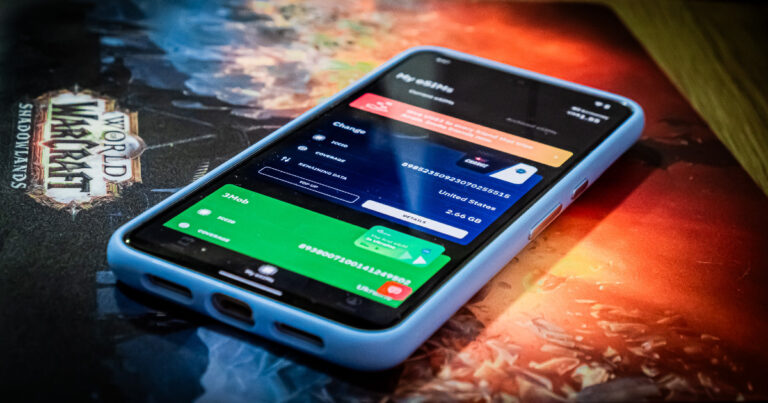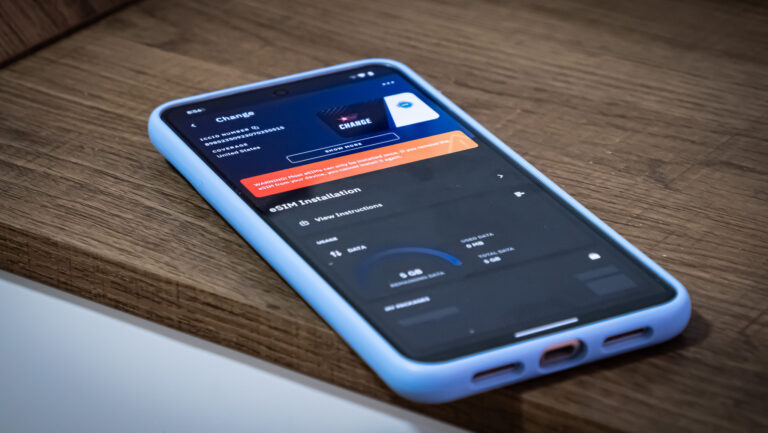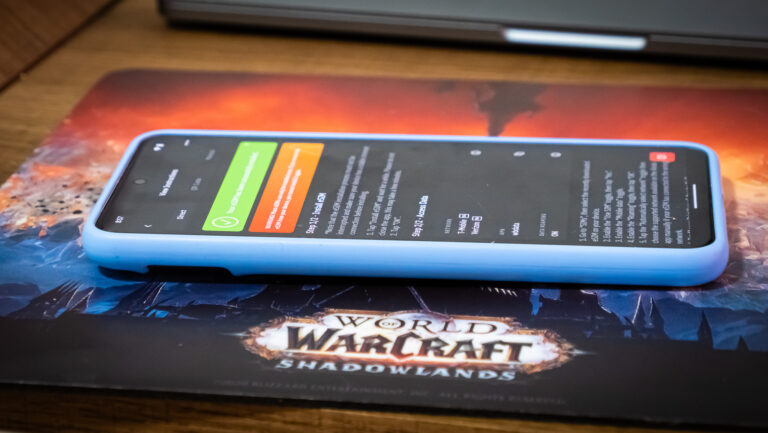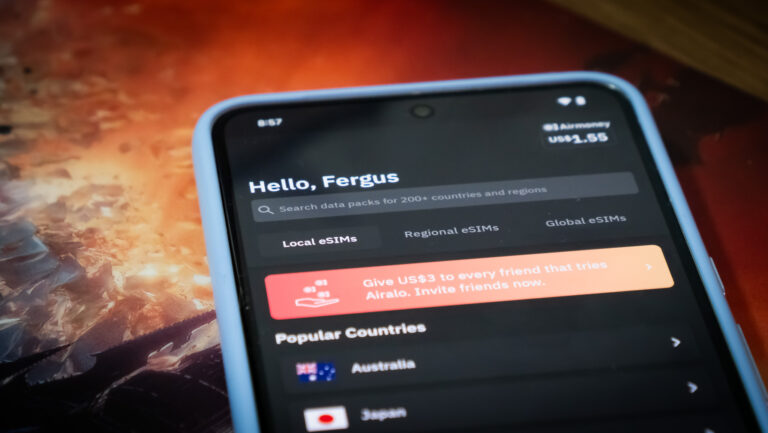Global gigabytes with a catch.
Airalo eSIM roaming review
If you're like me and you changed up your mobile plan during the pandemic, chances are that you probably didn't pick your new provider for their roaming options.
We all made decisions we regret during lockdown and if there's a handset or contract involved it can be a pain to undo them. Even before the pandemic though, the practical realities of roaming left something to be desired. Right behind the ability to swap to a better mobile provider without leaving your house, the other big selling point for eSIMs writ large was that it could make this experience better.
Rather than go through the hassle and expense of wrangling a local SIM for a given destination once you touch down or putting up with whatever rates your current provider offers, global eSIM providers like Airalo are pitched as a cheaper and more convenient alternative way to stay connected when you're traveling abroad.
The reality attached to this friction-less vision of the future isn't quite a slam dunk, but there's still a lot to like about it.

More Travel SIM options
Where are you travelling to? Airalo is a great option no matter where you're going but there's plenty of alternatives if this eSIM just isn't for you:
- America: Best SIM cards for the USA
- Europe: Travel the EU with these SIM deals
- Indonesia: Best SIM options for Bali
- Japan: Travel SIMS for Tokyo, Osaka and Kyoto
- United Kingdom: Best travel SIM cards for the UK
How much does an Airalo eSIM cost in Australia?

The price of an Airalo eSIM varies depending on your destination, data allowance and duration. Generally speaking, the cheapest plans start at around USD $5 while the more expensive ones go up to $50.
For a sense of how much Airalo can cost, check out the table below for a breakdown of how much its roster of eSIMs for the United States cost.
Naturally, the degree to which you're saving money is going to vary based on your current provider and the exchange rate involved.
However, in my specific case, the pricing listed above represented a huge improvement on the data roaming options available to me through Woolworths' Everyday Mobile add-ons. For comparison, those four roaming add-ons are as follows:
- $7 for 150MB, 30 mins of talk, 30 texts with 1-day expiry
- $30 for 1GB, 60 mins of talk, 60 texts with 5-day expiry
- $50 for 2GB, 150 mins of talk, 150 texts with 10-day expiry
- $75 for 4GB, 240 mins of talk, 240 texts with 15-day expiry
Airalo eSIM : Setup explained
Setting up the Airalo eSIM was more-or-less as easy as the ideal, but surprisingly finicky in other ways that I didn't expect.
The basic throughline of downloading the Airalo app (which is available on both iOS and the Play Store), settling on a prepaid data pack for my destination and then activating the eSIM is as simple as you'd hope it would be. Unfortunately, I learned the hard way that activating that eSIM isn't something you want to leave until you land nor is it as seamless as it could be.
This part of the process doesn't require any specialised hardware but it does require a more stable internet connection than the line at customs can offer. If anything goes wrong, the eSIM you just bought might be rendered un-usuable. That's definitely not a possibility that you want to be faced with after a long flight, so you'll want to make sure you activate your eSIM well before your arrival.
Thankfully, as mentioned before, that process is relatively painless. Once you've decided on and purchased an eSIM using the Airalo app, you'll get taken to a list of instructions about how to activate it. The exact steps here may vary between iOS and Android but in the case of the latter it felt a little clunky and awkard.
After activating the eSIM itself, I had to swipe between my SIM settings and the Airalo app to copy and paste various configuration details between the two. This was not an impossible task by any means, but the fact that the instructions are laid out like a readme for a cracked version of Adobe Photoshop doesn't really inspire a tremendous amount of confidence.
Another thing that irked me here was the strange amount of latency between the amount of data that my smartphone said it was using (specifically when it came to cellular connectivity) and the amount of my allowance left in Airalo allowance whenever I checked in on it using the app. I never got into any trouble with it, but was always a bit unsettling to open up the Airalo app and see a number that wasn't what I expected.
Airalo eSIM: How convenient is it?

It's hard to get too in the weeds when it comes to the connections speeds and coverage that you'll get with an Airalo eSIM. Ultimately, that's going to have to do more with the specific country you're visiting and whatever alliances that Airalo have made to offer service in that region.
In terms of saving me the trouble of having to swap and handle a secondary physical SIM, the Airalo eSIM is a huge improvement. That said, there was one big catch to this SIM card-free convenience.
Airalo's eSIMs do not include any phone call coverage. You get data and that's it. If all you're doing is posting to Facebook or relying on Uber or WhatsApp, that's not going to be a dealbreaker. However, if any of your apps require a 2-factor authentication code (or any security mechanisms get triggered by the fact that you're traveling abroad) that can end up being a massive pain to deal with.
On the other hand, the fact that you can easily top up your data allowance whenever you get low is a lifesaver. Rather than buy a new eSIM outright, Airalo also sells a number of smaller "booster" add-ons that are a better fit for those in a pinch moments and a whole lot cheaper than buying anew eSIM outright.
If you do happen to exhaust your entire data allowance before you have the chance to top up you'll need to find some sort of WiFi connection in order to do so. Given that, it would have been nice to see something like the emergency data that providers like Circles.Life offer.
How does the Airalo eSIM compare?

As far as comparing it to the obvious alternatives of adding a roaming add-on to your current mobile plan or picking up a local SIM from the airport go, the Airalo eSIM has a few big advantages but also a number of key drawbacks.
In the pros column, there's the price and the ease with which you can get set up. Your mileage may vary based on your destination and the exchange rate with the US dollar, but the fact that Airalo offers support for over 200 countries (plus multi-country, regional and global options) gives you a ton of flexibility at a pretty competitive price. That combination means that it's going to be a standout choice for those who tend to zig and zag their way between different destinations with some regularity.
Still, the fact that you don't can't take phone calls or texts and the fact that setup process (at least on Android) is as intimidating as it is may put some off. If you're looking for a set-and-forget substitute for the usual roaming options, this gets pretty close but there is still a bit more friction than you'll get with something like Vodafone's $5 a day roaming.
Airalo eSIM: Is it worth the money?

Despite these drawbacks, an Airalo eSIM is a great option to consider if you're looking for an alternative to the usual options.
You might have to do some tinkering in the settings menu but it's a lot less hassle than having to wrangle a physical SIM, a lot less money than most Australian roaming add-ons ask for and while it does lack some key features like phone calls, those who can get away with those limitations will come away with a pretty solid amount of savings.
Airalo's take on a roaming eSIM doesn't feel like the best version of this idea, but it's a great showcase for the convenience, flexibility and value that eSIM can offer in general.
Related Articles





